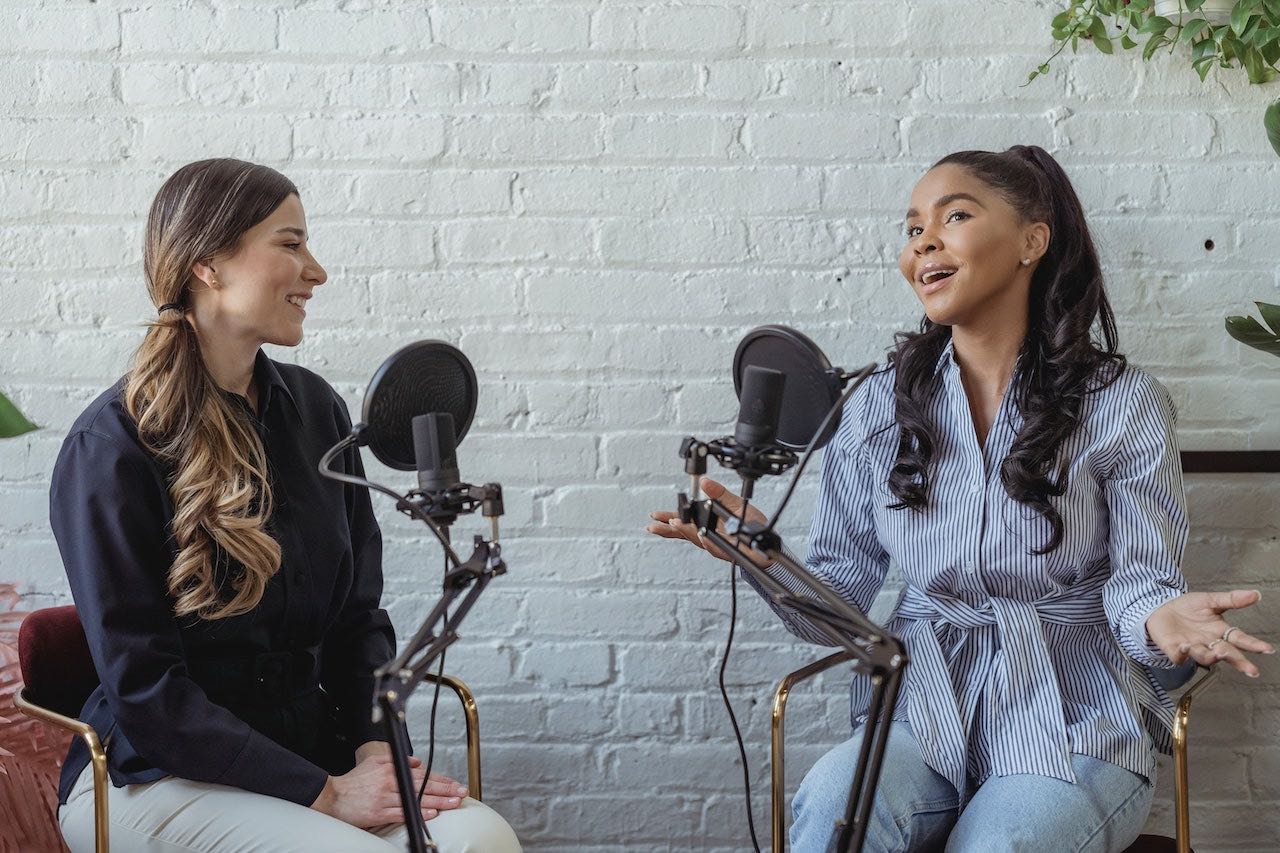
Podcasting has arisen as one of the most exciting opportunities to share your voice, opinions, and knowledge. The only problem? The podcast waters have become more and more crowded.
Though eMarketer estimates that around 424 million people regularly tune in to podcasts, they have lots of choices. In other words, you have to work harder to gain a competitive edge. Even if you already have a following, you may find it tough to snag new listeners. But investing in some tech tools can help.
You don’t need to spend a fortune to sound like a million bucks, though. Below are some of the top recommendations for products and platforms that will give your podcast some polish. Investing in just a few of these items could help you hit the big time and gain more podcasting credibility.
1. A new and improved microphone
When you first started as a podcaster, you probably bought a decent microphone. Maybe you even went a little cheap, just in case your podcasting didn’t gain traction. Now, you’ve racked up quite a number of episodes. And that means it’s the perfect time to make an upgrade to a better quality microphone.
For example, you may be using a USB microphone. Many podcasters do. USB microphones are terrific for beginners because they’re plug-and-play devices. The issue is that their audio quality tends to lag behind their XLR counterparts. When you’re first entering the podcasting scene, slightly flawed audio doesn’t matter much. When you want to scale up your listenership, it matters much more.
The good news is that an XLR microphone won’t necessarily cost more than a USB microphone. There are awesome models at decent price points. However, you’ll need other tools to achieve a high degree of clarity, which adds to your overall cost. For example, your XLR microphone setup needs special cables and a mixer to produce great sound.
Expect to spend a little time getting to know your XLR microphone and don’t take it for a spin until you’re confident. With practice, you’ll discover that updating the object that captures your voice will pay off handsomely.
2. Cloud-based podcast recording software
Are you currently recording all your podcasts on a platform like Zoom? In that case, you’re probably dealing with a lot of sound quality issues. Make no mistake: Even if what you say can be heard, audiences will know that it sounds subpar.
The most efficient and cost-effective workaround for this issue is to move your sound to cloud-based recordings. A cloud recording studio provider will take your audio directly from your computer and deliver professional recordings back.
Leading cloud recording provider SquadCast notes that remote recordings help you achieve the crystal clear audio you want. In the case of SquadCast, all audio files are backed up, too. That way, you can be sure that you’ll never have to worry about your recording quality or location.
A final note about finding a solid recording provider: You’ll also never again have to worry about audio drift. Audio drift causes podcasts to look and sound amateurish. When your recordings and video are in sync, you’re golden.
3. Dedicated podcast space
This suggestion isn’t exactly a tech tool, but it’s a necessity if you want to get the most out of your tech. As you already know, acoustics matter when you’re recording anything. All it takes is an annoying echo effect to cause a listener to turn to another podcaster.
What you need is a sound-tempering space to record your podcasts. However, you don’t have to go outside your home. Surprisingly, many professional podcasters work from their residences—but you’d never know it.
Some of the best-kept secrets to creating a room with perfect sound involve thinking small. Essentially, look for cramped places where sound can’t bounce off walls. A closet choked with clothing or towels could be an ideal setting, for instance.
You could certainly go crazy and soundproof your home office, particularly if your podcasting is bringing in some bucks. Soundproof material is relatively inexpensive and fairly uncomplicated to install. So if you’re a DIYer, have at it. Your “home studio” update efforts will allow your tech to work at the highest level.
4. Editing software
You have the microphone of your dreams, a cloud-based recording platform, and a terrific space. All that’s left is editing software.
Don’t feel daunted if you’re not a techie type. Instead, choose a premium podcasting editing software that offers great tutorials. Case in point: Adobe Audition provides tons of supportive content. The content is broken down well and very digestible.
Certainly, there are free versions of editing software out there. (Garage Band has grown from a native iPhone app to a podcasting player.) A free plan certainly works with any budget but might not have the bells and whistles you need to go viral.
As you did with your other tools, set aside time to play with your preferred editing software. Plenty of podcasters don’t squeeze every ounce of editing capacity out of their editing software. By taking advantage of all your software’s capabilities, you’ll have more options.
Yes, the podcasting world is becoming noisy and cluttered. Nevertheless, with a tech facelift, you could break out and become the next big Spotify star.
Advertising disclosure: We may receive compensation for some of the links in our stories. Thank you for supporting LA Weekly and our advertisers.
